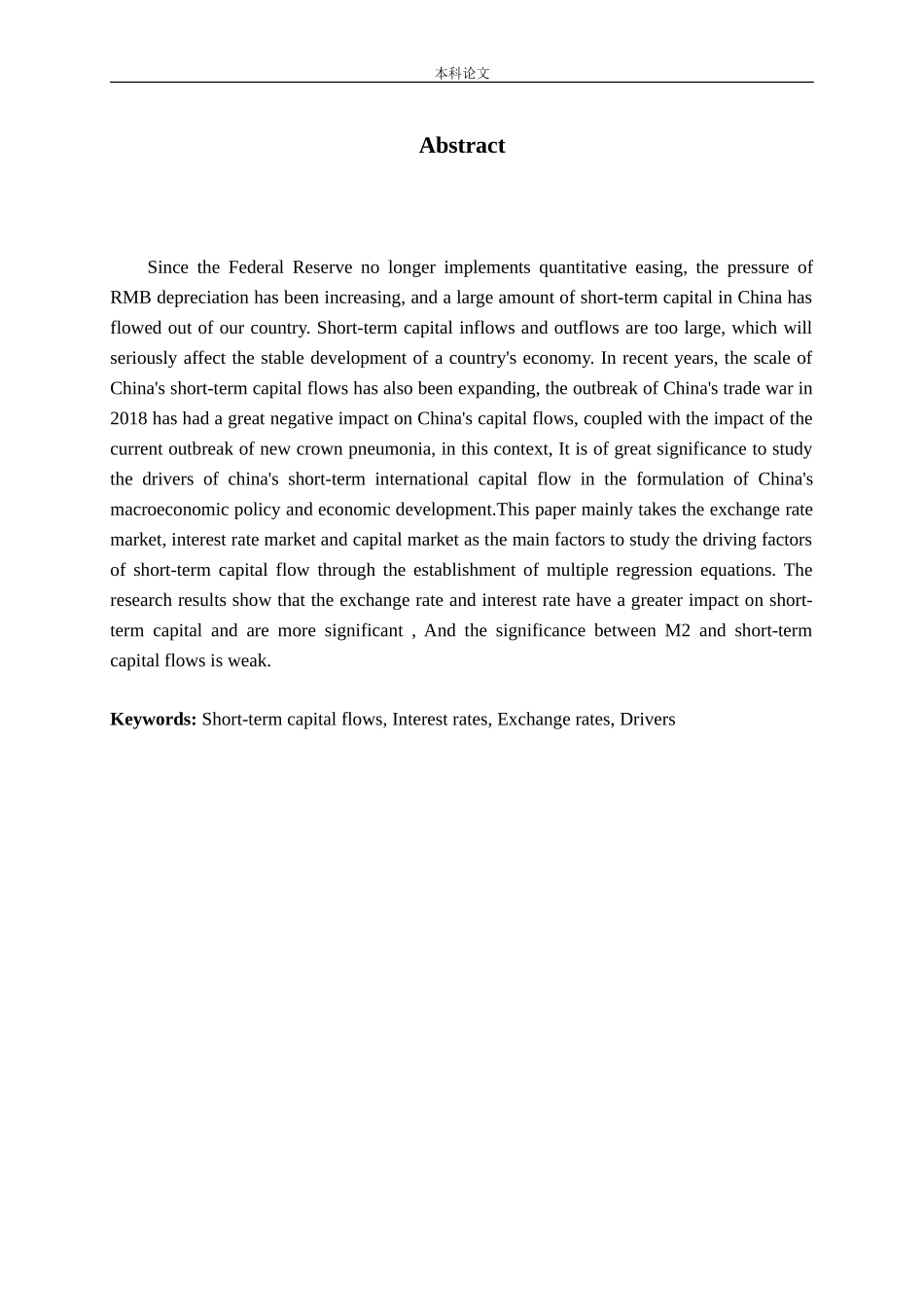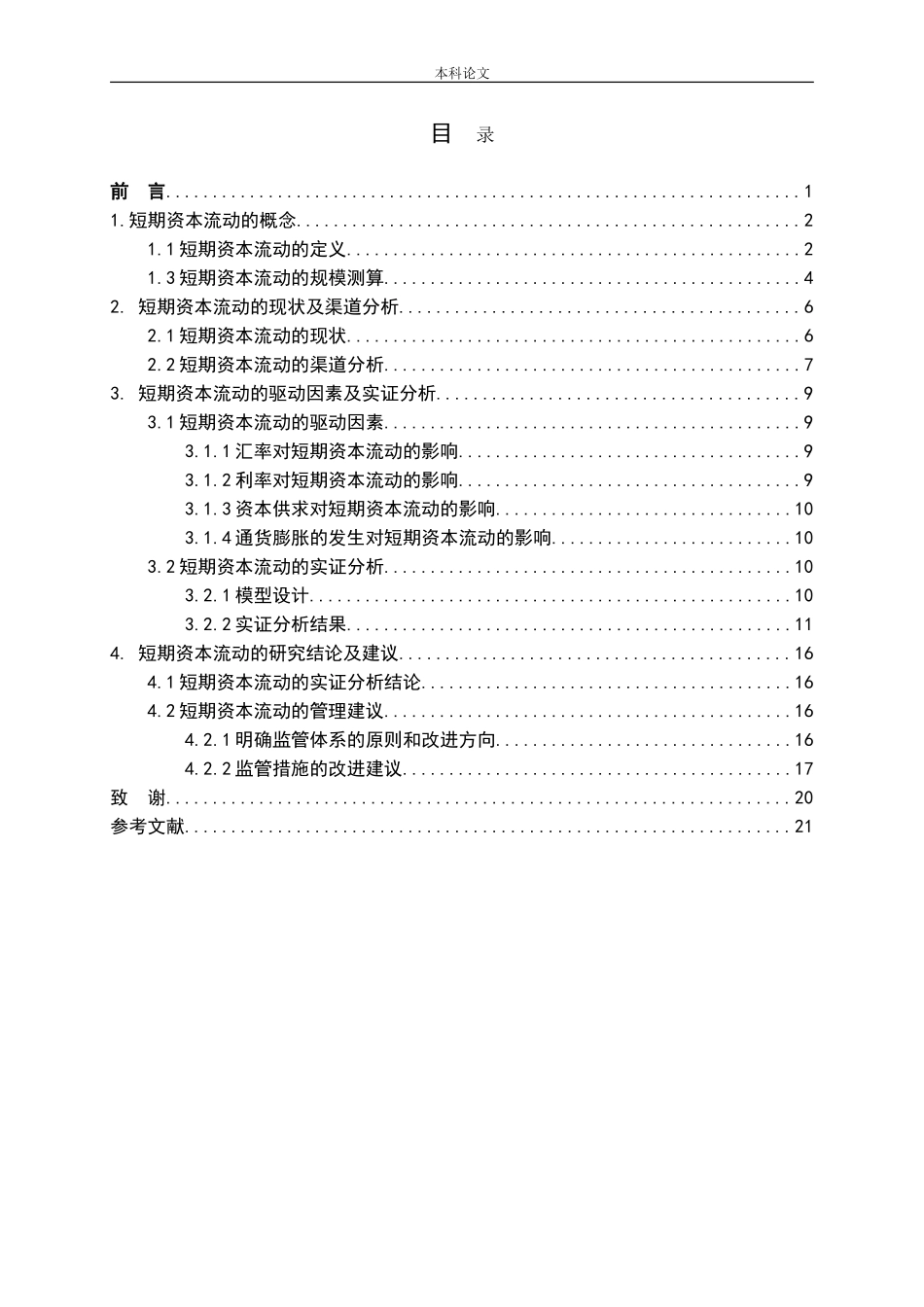本科论文摘 要随着全球经济和信息化的不断发展,短期国际资本在不同国家之间的流动也变得越来越频繁。从美联储不再实行量化宽松政策之后,人民币贬值的压力越来越大,我国大量的短期资本从我国境内流出。短期资本流入流出幅度过大,会严重影响一国经济的稳定发展。近年来,中国的短期资本流动的规模也在不断的扩大,2018 年中国贸易战的爆发对我国的资本流动产生了很大的不利影响,加上现在新冠肺炎疫情的影响,在此背景下,研究我国短期国际资本流动的驱动因素对我国宏观经济政策的制定和经济的发展都有着十分重要的意义。本文主要以汇率市场、利率市场和资本市场为主要因素通过建立多元回归方程的方法进行短期资本流动驱动因素的研究,研究结果表明,汇率和利率对短期资本的影响幅度较大,显著性较强,而 M2 与短期资本流动之间的显著性较弱。关键词:短期资本流动,利率,汇率驱动因素本科论文AbstractSince the Federal Reserve no longer implements quantitative easing, the pressure of RMB depreciation has been increasing, and a large amount of short-term capital in China has flowed out of our country. Short-term capital inflows and outflows are too large, which will seriously affect the stable development of a country's economy. In recent years, the scale of China's short-term capital flows has also been expanding, the outbreak of China's trade war in 2018 has had a great negative impact on China's capital flows, coupled with the impact of the current outbreak of new crown pneumonia, in this context, It is of great significance to study the drivers of china's short-term international capital flow in the formulation of China's macroeconomic policy and economic development.This paper mainly takes the exchange rate market, interest rate market and capital market as the main factors to study the driving factors of short-term capital flow through the establishment of multiple regression equations. The research results show that the exchange rate and interest rate...


